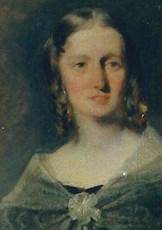The Family Trust
Edward's grandchildren benefited from another Family Trust, separate from the will. It postponed transfer of the property until the death of the children and their surviving spouses, who had a life interest in the income. They could choose how to allocate the property among their own children.
When Lloyd George acquired the Daily Chronicle, he bought it from the “Family Trust”. More tangibly, the Tower Hamlets archive contains the records of Edward's first industrial site at Bow Bridge — the leases had continued in family ownership, albeit as a relatively minor asset. Some of the documents recorded changes of trustee.
A 1942 document noted the death of Edward's son Harry that year. Arthur had died childless in 1910, so his portion of the Family Trust would have reverted to his brothers’ and sisters’ families in 1942 when his widow Bertha died. Walter survived until 1951, Alice until 1952 and Florence until 1954. The longest living surviving spouse of whom we have heard, Walter’s second wife Jessica, died in September 1967. Assuming that no others outlived her, the Trust would have been wound up then.
The effect of this Trust is confirmed in a letter dated 28 August 1912 from Frank Lloyd, a trustee, about his elder sister Annie Bullen who had recently been widowed. He wrote: “Mr Bullen’s death does not make any difference to the Trust as the income has to be paid to my sister for life and the capital divided as she may by her will decide between the children who may survive her.” This only makes sense in the context of a Trust additional to the will Trust. The Family Trust in which she had no interest also makes sense of the exceptionally lavish provision that Edward made for Maria in his will.
A statement of shareholdings in Edward Lloyd Ltd, drawn up in January 1890 when the company was set up, shows that the nominal capital of £250,000 consisted of 2,500 £100 shares. Ownership was split roughly 48:52% between Edward and his four trustee sons, an arrangement designed to give the family trust a guaranteed majority vote in the business. He added a codicil to the will clarifying his definitive intention to transfer the property in the shares to his sons.
On Lloyd’s death, his own shares were transferred to his executors — Frank, Maria and nephew Charles — and it was those that were distributed to the children in 1911. We do not know how great a part of the value of the estate (£563,743, £64.7m) these shares represented, making guesswork of any attempt to assess the growth in the value of the business between 1890 and 1911.
The value of the shares that Edward left in his will is shown in the estate account drawn up in 1911 as £513,600 (£54m now). Adjusted for inflation, this was only 10% less than the value of the entire estate 21 years earlier. That had included four prime properties, three in London. This means that the combined value of the two trusts’ holdings, and so of the business, had roughly doubled in value.
At some time before 1911, the business had been divided between Edward Lloyd Ltd and United Newspapers Ltd. This was probably done to segregate the paper mills, which went to the first, from the publishing business, which went to the second. In 1911, they were each worth about a quarter of a million.
Lloyd George bought United Newspapers in 1918. Given 20% annual inflation during the war years, Frank Lloyd valued the company, quite realistically, at £1.1m (£55.8m now). Lloyd George paid £1.6m (£81m) — a 40% premium.
At that time, the Family Trust was the only owner. Since nearly half the value of the business was distributed to Lloyd‘s children in 1911, any who had been minded to sell their inheritance had most probably sold their United shares to the family trust.
Edward Lloyd Ltd became a public company in 1911. The family still had substantial shareholdings in 1927 when the company was sold following Frank‘s death. The list does not include Lloyd’s two sons by Isabella, Edward and Charles, or the two sons by Maria, Thomas and Ernest, who were treated differentially in the will. Only one of these, Ernest, would have been eligible as a beneficiary under the Family Trust since he was the only one known to have had children.

